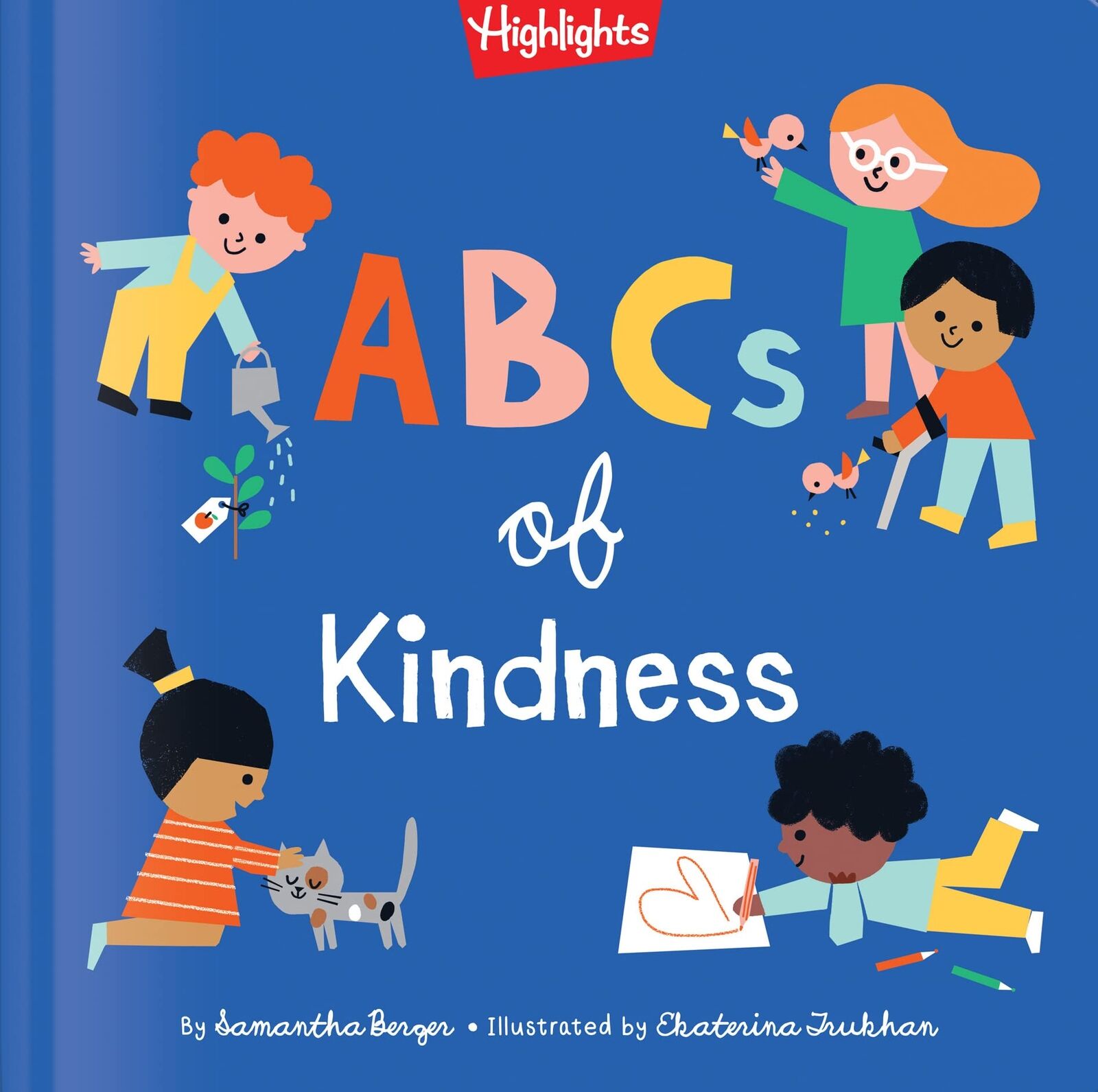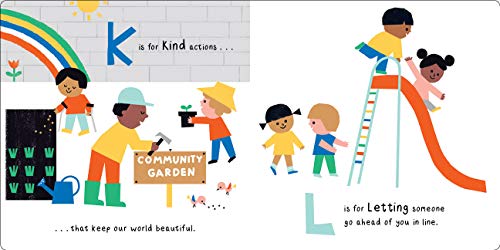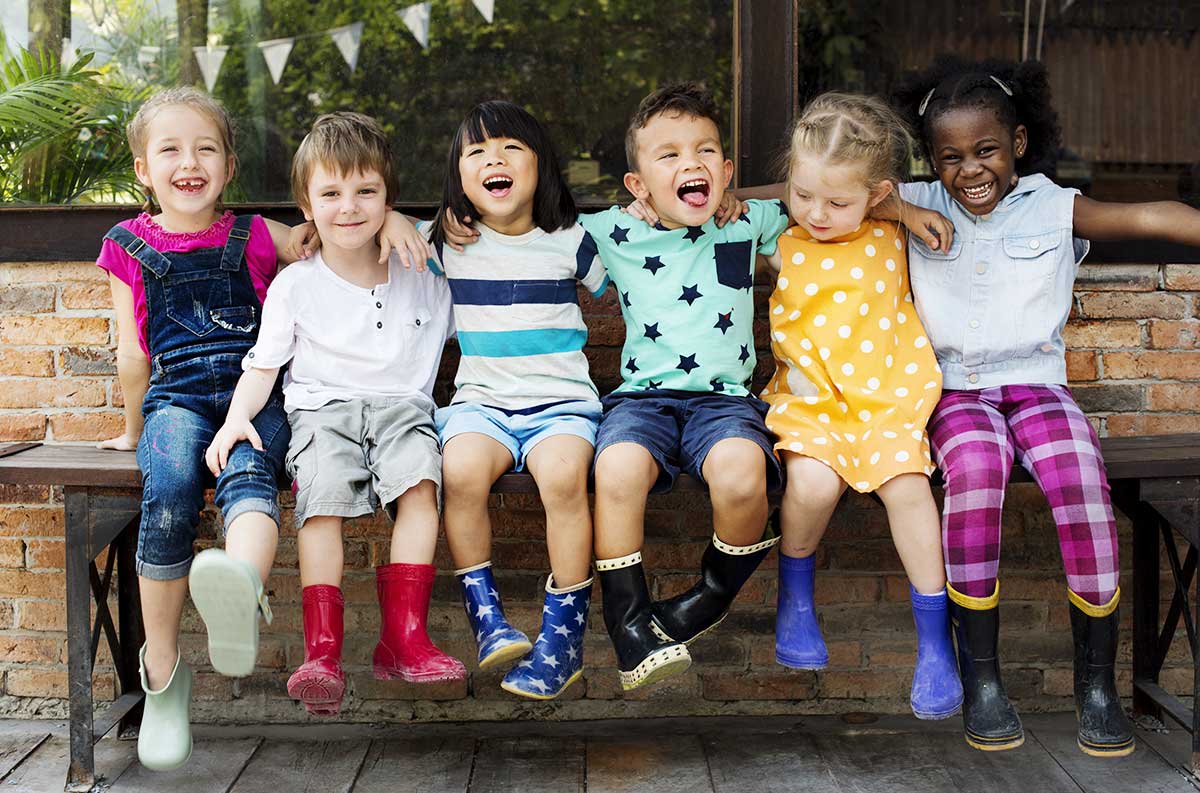
Inclusive Children's Book Teaching Guide
ABCs of Kindness
What is this book about?
From A to Z, this hardcover storybook shows young children how they can make the world a kinder place. Through vibrant illustrations and age-appropriate language, this 26-page kindness book will encourage children ages 2–5 to be their best selves wherever they go.
Showcasing a diverse cast of children, ABCs of Kindness demonstrates everyday acts of kindness, inclusion and generosity—from donating blankets to an animal shelter to helping with chores to standing up for what's right. It’s the perfect book to spark conversations about concepts such as empathy and compassion at home or in the classroom.
Who is depicted in this book?
- Diverse groups of children engaging in acts of kindness and building community
What early childhood themes and concepts does this book explore?
- The value of generosity and kindness
- Noticing and responding to the needs, feelings and struggles of others
- Types of shared play experiences
- Capital letters and the basic vocabulary of kindness
How does this book support anti-bias education?
ABCs of Kindness helps lay the foundation for future social action by helping children understand diversity, as well as the importance of choosing kind words, helping others in need, and standing up for peers.
Depending on how the book is shared or used—and the developmental level of the children—ABCs of Kindness may be used to support the following core goals from Anti-Bias Education for Young Children and Ourselves:
Diversity—Teachers will promote each child’s comfortable, empathetic interaction with people from diverse backgrounds so that children will express comfort and joy with human diversity, use accurate language for human differences, and form deep, caring connections across all dimensions of human diversity.
Justice—Teachers will foster each child’s capacity to critically identify bias and nurture each child’s empathy for the hurt that bias causes so that children will increasingly recognize unfairness (injustice), have the vocabulary they need to describe unfairness and understand that unfairness hurts.
Activism—Teachers will cultivate each child’s ability and confidence to stand up for oneself and for others in the face of bias so that children will demonstrate a sense of empowerment and the skills to act, with others or alone, against prejudice and/or discriminatory actions.
How can this book be used to meet early childhood learning standards?
For all ages
Use ABCs of Kindness to meet early childhood literacy standards
For children from birth to age three
Teaching suggestion: Point out examples of children at play, as well as other actions and familiar settings that the youngest children can react to, point to or name.
What Illinois Early Learning Guideline does this meet for children from birth to age three?
Developmental DomainSocial-Emotional Development
Standard: Relationship with PeersChildren demonstrate the desire and develop the ability to engage and interact with other children.
Indicators for children:
- Begins to engage in parallel play in closer proximity to other children (7–18 months)
- Begins to engage in simple reciprocal interactions such as rolling a ball back and forth (16–24 months)
- Demonstrates a preference toward select peers (21–36 months)
Teaching suggestion: Point out and imitate examples of friendly greetings—such as waving “hi” or saying hello with a hug or a pat—and helping others.
What Illinois Early Learning Guideline does this meet for children from birth to age three?
Developmental DomainSocial-Emotional Development
Standard: Relationship with PeersChildren demonstrate the desire and develop the ability to engage and interact with other children.
Indicators for children:
- Begins to engage in parallel play in closer proximity to other children (7–18 months)
- Begins to engage in simple reciprocal interactions such as rolling a ball back and forth (16–24 months)
- Demonstrates a preference for select peers (21–36 months)
For preschoolers (ages three to five)
Teaching suggestion: Select and share examples of caring and empathy. You'll find good examples on the pages for letters B, C, E, F, U, and V. Notice, narrate and introduce vocabulary for these behaviors and their effects.
What Illinois Early Learning and Development Standards does this meet for preschoolers?
Social/Emotional Development Standard31ADevelop positive relationships with peers and adults.
Benchmark 31.A.ECa:
Show empathy, sympathy, and caring for others.
Benchmark 31.A.ECb:
Recognize the feelings and perspectives of others.
What Illinois Early Learning and Development Standards does this meet for preschoolers?
Social/Emotional Development Standard31BUse communication and social skills to interact effectively with others.
Benchmark 31.B.ECa:
Interact verbally and nonverbally with other children.
Teaching suggestion: Point out and discuss examples and consequences of acts of kindness and inclusion. Relate these to children’s everyday experiences. Although Learning Standards 30A and 32A (below) are framed almost entirely through examples of negative behaviors, rule violations and consequences, books such as ABCs of Kindness provide opportunities to identify, teach and discuss positive behaviors that foster healthy relationships and a caring community.
What Illinois Early Learning and Development Standards does this meet for preschoolers?
Social/Emotional Development Standard30AIdentify and manage one’s emotions and behavior.
Benchmark 30.A.ECf:
Begin to understand the consequences of his or her behavior.
What Illinois Early Learning and Development Standards does this meet for preschoolers?
Social/Emotional Development Standard32ABegin to consider ethical, safety and societal factors in making decisions.
Benchmark 32.A.ECb:
Follow rules and make good choices about behavior.
What other resources are available?
This book is part of the Highlights Kindness Library, which includes books, activity booklets and posters with similar themes—all available on the Highlights website.

